Table of Contents
- Efficiency Meets Comfort: The Inverter Aircon Revolution
- How Does It Work?
- Delving Deeper into the Perks of Inverter Air Conditioners
- Traditional Aircon vs. Inverter Aircon: A Cool Comparison
- Adaptable Performance of Inverters: A Dive into Consistent Comfort
- Seasonal Savings with Inverter Aircon
- Smart Cooling in the Tropics: Inverter Aircons and Home Tech
- Cool Choices: Inverter Aircons in the Philippines
- FAQs about Inverter Aircons
Efficiency Meets Comfort: The Inverter Aircon Revolution

The story of how we maintain our homes’ temperatures has a new hero in town: the inverter air conditioner. Imagine a world where our air conditioning systems are smarter, efficient, and quieter. This isn’t some futuristic fairy tale – it’s today’s reality thanks to inverter technology.
How Does It Work?
At the heart of inverter aircons is the inverter technology, which is essentially a variable speed compressor.
Traditional air conditioners have compressors that are either “on” at full capacity or “off.” However, the inverter’s compressor runs at varying speeds, allowing the unit to maintain a constant temperature without constantly turning on and off.
This is similar to driving a car. Imagine if every time you needed to adjust your speed, you either floored the accelerator or completely took your foot off. It would be a very jerky, inefficient ride, right?
The inverter air conditioner gives you that smooth cruise control experience.
Delving Deeper into the Perks of Inverter Air Conditioners
Energy Efficiency:
One of the most compelling arguments for inverter air conditioners is their impressive energy efficiency. Let’s put this into perspective.
Traditional air conditioning units, with their repeated cycles of turning on and off, can be compared to a car that constantly stops and starts in traffic, consuming more fuel.
On the other hand, inverter air conditioners, with their ability to modulate power, are akin to a car cruising at a steady pace on a highway, using fuel more judiciously. This optimized power consumption means fewer units of electricity are used.
For homeowners, this translates to more manageable electricity bills, and over the years, these savings can be substantial. When you think of it as a long-term investment, it’s not just about immediate comfort but also about the financial benefits in the long run.
Longer Lifespan:
An often-underestimated advantage of inverter technology is the prolonged lifespan of the unit. Imagine the wear and tear on a machine that’s constantly stopping and starting versus one that maintains a steady pace. It’s no different for air conditioners.
The consistent strain traditional units face from their start-stop action can lead to faster wear and tear on its components, often resulting in more frequent repairs or replacements. In contrast, inverter air conditioners maintain a more even operational pace. This reduces stress on internal components, ensuring they last longer.
Over time, this could mean fewer maintenance issues and a longer interval before you even have to think about replacing the unit.
Quieter Operation:
Peace and tranquility in our living spaces have become more valuable than ever, especially with many of us spending more time at home. In this regard, inverter air conditioners are a blessing.
Their steady operation eliminates the abrupt starts and noisy peaks associated with traditional units. Instead of being jolted by the sudden roar of a compressor kicking in, inverter units provide a more muted, consistent hum, if at all.
This ensures that your moments of relaxation, whether it’s watching a movie, reading a book, or just catching a quick nap, remain undisturbed.
Faster Cooling/Heating:
Everyone knows the feeling: coming in from an extremely hot or cold day, and waiting impatiently for the room to reach a comfortable temperature. With traditional air conditioners, this wait can feel endless.
However, inverter air conditioners have a distinct advantage. Given their modulating nature, they don’t need to start from zero every time. They can quickly adjust to deliver the required cooling or heating power, ensuring the room reaches your desired temperature more swiftly.
It’s about immediate comfort, reducing the time you spend in discomfort.
Traditional Aircon vs. Inverter Aircon: A Cool Comparison
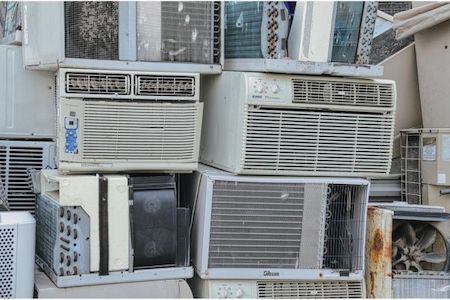
To appreciate the magic of inverter air conditioning, let’s first dip our toes into the world of traditional air conditioning.
Picture this: It’s a scorching summer day, and you turn on your air conditioner. The machine roars to life, cools your room down, then once your desired temperature is achieved, it completely shuts off.
Then, as the room starts to warm up again, the air conditioner jolts back to life and the cycle repeats.
Now, enter the inverter air conditioner.
Instead of the stop-start jolting action, this superhero continuously adjusts its cooling (or heating) power based on the room’s current temperature.
Instead of roaring to life, it hums consistently, maintaining the perfect temperature and avoiding those startling on-and-off moments.
Examining traditional aircon and inverter aircon: What sets them apart?
When choosing an air conditioner, two primary contenders often arise: the classic Traditional Aircon and the modern Inverter Aircon.
Let’s break down their differences in a way that’s both simple and captivating.
How They Operate
- Traditional Aircon: It’s a straightforward mechanism. The system powers on at full capacity to cool the room and shuts off once it hits the desired temperature. When the room warms up again, the cycle restarts.
- Inverter Aircon: This savvy device operates more intelligently. Instead of turning off completely, it adjusts its power output to maintain a consistent temperature. It’s like a car coasting on a highway, adapting its speed based on traffic.
Energy Consumption
- Traditional Aircon: Because of its on-and-off operation, it can sometimes use more power. It’s like turning your car on and off repeatedly, which consumes more fuel.
- Inverter Aircon: By continuously adjusting its power and avoiding complete shutdowns, it tends to be more energy-efficient. Think of it as a dimmer switch for lights, giving just the right amount of illumination without wasting energy.
Noise Levels
- Traditional Aircon: Due to its cyclic operation, you might notice a more pronounced noise each time it starts up.
- Inverter Aircon: Its consistent operation leads to a steadier, often quieter performance. You’re less likely to hear those sudden roars interrupting a quiet evening.
Quick Response
- Traditional Aircon: Since it starts from a complete stop each time, reaching the desired temperature might take a little longer.
- Inverter Aircon: Already running, albeit at a lower power, it can ramp up quickly to adjust to temperature changes, providing faster cooling or heating.
In the end, both systems have their merits.
Traditional air conditioners have stood the test of time, providing reliable cooling for years.
However, the inverter air conditioner, with its adaptive technology, promises energy savings and consistent comfort. The choice, as they say, is in the air!
Adaptable Performance of Inverters: A Dive into Consistent Comfort
In the world of air conditioning, adaptability is key. While it’s essential for an air conditioner to cool or heat a space, it’s even more critical for the system to maintain a steady, comfortable environment.
This is where inverter air conditioners shine, boasting an adaptable performance that’s a game-changer in climate control.
Reacting to Room Conditions
Imagine hosting a party. As guests pour in, the room naturally warms up due to the increased number of people.
A traditional air conditioner might struggle to maintain a consistent temperature in this scenario.
In contrast, an inverter air conditioner senses the change in room conditions and subtly increases its cooling capacity to compensate, ensuring that the comfort level remains steady.
External Temperatures & Their Influence
The external temperature can greatly influence an air conditioner’s performance.
On particularly hot or cold days, the demand on an air conditioning unit can be high. Inverter technology excels in these extreme conditions.
By continuously monitoring both the internal and external temperatures, it can modulate its operations to provide optimal comfort inside, regardless of the weather outside.
Efficiency & Longevity
The ability of inverter air conditioners to operate at variable speeds doesn’t just contribute to consistent comfort. It also results in energy efficiency.
By avoiding the energy-intensive start-stop cycles typical of traditional units and running at optimized levels, inverters can save on energy consumption.
This efficient operation also means reduced wear and tear on the unit, potentially leading to a longer lifespan.
Seasonal Savings with Inverter Aircon
In the tropical climate of the Philippines, where the sun blazes for a good part of the year, air conditioning isn’t just a luxury—it’s a necessity.
For homeowners eyeing both comfort and savings, the debate often centers on traditional versus inverter aircon units.
Here’s how these stack up in the Philippine setting:
Beat the Heat: Dry Season Savings
Traditional Units: During the Philippines’ dry season, traditional aircon units have their work cut out for them. They tirelessly cool rooms to the preset temperature, pause, and then re-energize as the room heats up.
This on-off cycle, especially given the relentless heat, often translates to heftier electricity bills.
Inverter Aircon: This is where the inverter technology makes its mark. By continuously adjusting its cooling output to match room conditions, the inverter aircon maintains a consistent temperature, avoiding those energy-intensive start-ups.
This means cooler rooms with potentially lower energy consumption—a win-win in the blistering dry months.
Rainy Days and Cooler Nights
Traditional Units: The rainy season brings with it cooler nights, and sometimes, there’s a need for a slight warm-up, especially in the early hours.
Traditional units, when they have heating capabilities, follow the same routine—heat, pause, restart, leading to similar energy challenges.
Inverter Aircon: For homes that use their aircon for gentle heating during those chilly rainy nights, inverter units adjust seamlessly.
They offer consistent warmth without the constant start-stop, ensuring a comfortable night’s sleep without the worry of a surging electric bill.
Monsoon Months & Humidity Control
Another perk of many inverter aircons is their ability to efficiently manage humidity, which is especially valuable during the monsoon months.
By maintaining optimal room conditions, these units can make the indoor environment feel comfortable, even when the outside is damp and muggy.
The Bottom Line
Given the Philippines’ unique climatic conditions, the inverter aircon emerges as a favorable choice for many homeowners. Its adaptability to both scorching heat and cooler rainy nights, combined with its potential for energy savings, aligns well with the needs of the Filipino household.
Making the switch might just mean enjoying the tropical vibes indoors without the accompanying electricity bill shock!
Smart Cooling in the Tropics: Inverter Aircons and Home Tech
In warm places where the sun and heat dominate, there’s a tech trend changing how we stay cool indoors. It’s all about inverter air conditioners linking up with smart home systems.
Here’s what’s happening:
From Clicks to Conversations
Regular Units: Most air conditioners had a simple job: cool the room using a remote control. It was handy but pretty basic.
Inverter Aircon: The new-gen units do more than just cool. They can connect with other smart devices around the house. Think of an aircon that adjusts its cooling based on your room’s lighting or works with your smart blinds to keep things efficient.
Smart Responses to Weather and Activity
These aircons can tap into local weather apps. If it’s going to be an extra hot day, they can adjust early to keep things comfy.
Also, when linked with home security systems, they might turn down or switch off if they sense no one’s been in the room for a while. It’s smart cooling that can help save energy.
For folks living in hot areas, this combination of inverter air conditioners and smart tech is a game-changer. It’s not just about staying cool anymore; it’s about doing it smartly and efficiently.
Cool Choices: Inverter Aircons in the Philippines
Ah, the Philippines! Land of festivals, tropical beaches, and that ever-present sun. The warmth? Wonderful for vacation photos, but a tad too much indoors. That’s where the modern marvels of inverter aircons come into play.
Here’s a guide to the aircon types making waves in the Philippine market:
Split Type Inverter Aircon
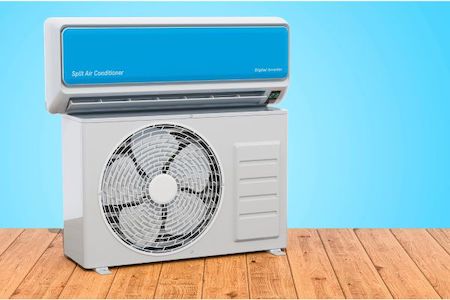
Description: A dual component system with an interior and an exterior unit. Sleek, modern, and efficient.
Why It’s Popular: Quiet operation and aesthetic flexibility. They easily blend into any room décor.
Island Insight: The preferred aircon choice for many, from bustling condos in Makati to peaceful retreats in Tagaytay.
Ceiling Cassette Inverter Aircon
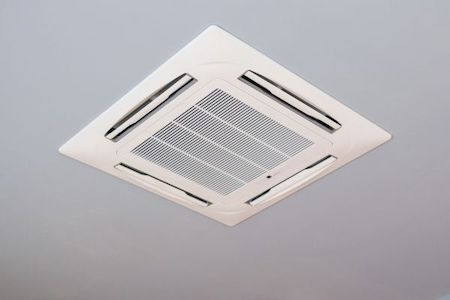
Description: Fitted flush to the ceiling, these ensure a 360-degree cooling experience without taking up wall space.
Why It’s Popular: Their discreet presence! Excellent for commercial hubs and larger living spaces.
Island Insight: Often found in upscale eateries or resorts, delivering comfort without compromising on aesthetics.
Floor Mounted Inverter Aircon
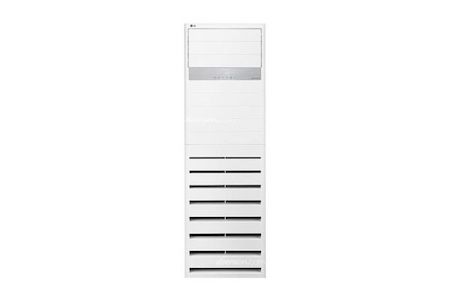
Description: Standing units designed for areas where wall space is at a premium or ceilings are high.
Why It’s Popular: They’re adaptable, and some models can warm spaces – think chilly evenings in the highlands.
Island Insight: The adaptable ‘jeepney’ of the aircon world, fitting into various room designs seamlessly.
Window Type Inverter Aircon
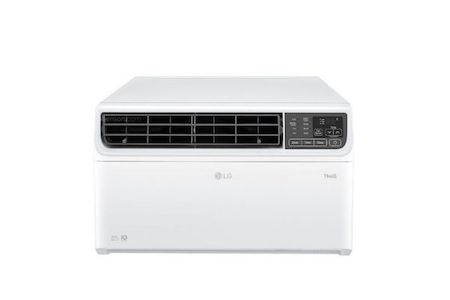
Description: A compact unit that fits into a window space. The traditional aircon gets a tech upgrade with inverter technology.
Why It’s Popular: Simpler installation and now with the added bonus of energy efficiency due to inverter tech.
Island Insight: A familiar aircon sight in many homes, now becoming even smarter and cost-effective.
Portable Inverter Aircon
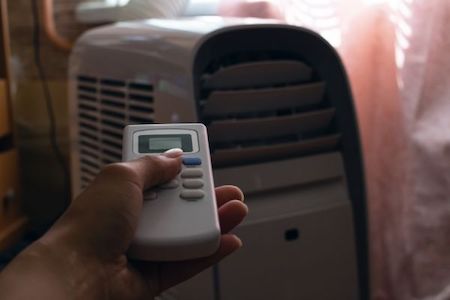
Description: Mobile and easy to move, these units can be transferred from room to room based on cooling needs.
Why It’s Popular: Their flexibility! No need for fixed installations; just wheel it to where you need a chill.
Island Insight: Just like bringing your personal cool breeze wherever you go—ideal for those who are always on the move or living in rented spaces.
Multi-Split Inverter Aircon
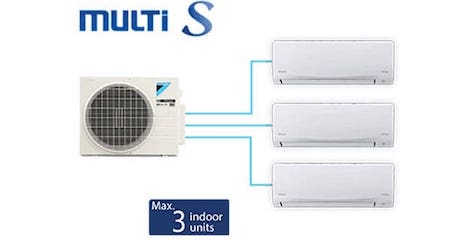
Description: A system where one outdoor unit powers multiple indoor units, each with individual controls.
Why It’s Popular: Space efficiency and the ability to cater to different cooling needs in one go.
Island Insight: Like a versatile karaoke setup – each room sings its cooling tune!
From Luzon’s urban sprawl to the serene getaways in Visayas and Mindanao, the quest for the perfect cool remains the same.
With this array of inverter aircons, there’s a solution for every Filipino home, ensuring comfort under the tropical sun.
Whether you’re sipping on a refreshing mango shake or just lounging indoors, there’s an inverter aircon type perfectly tailored for your needs!
So, if you’ve been following along, we’ve dived deep into the cool world of inverter air conditioners.
From energy savings to syncing with your favorite smart devices, these aircons are like the superheroes of the tropical cooling scene. They’re here to save the day (and maybe a few pesos on your electricity bill!).
If your old aircon is the equivalent of a basic flip phone, consider the inverter aircon the smartphone – versatile, smart, and oh-so-cool. Upgrade time, anyone? 😎🌬️🌴
